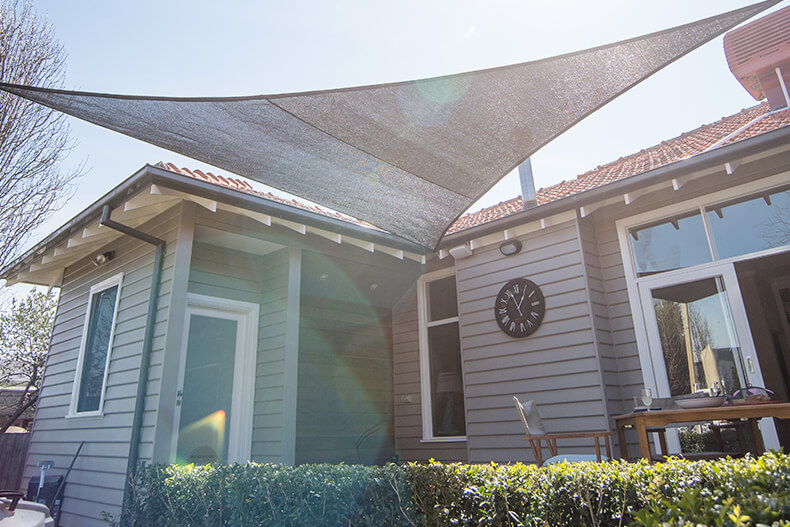Selecting the appropriate shade solution for your outdoor space can dramatically transform how you use and enjoy your garden, patio, or pool area. With rising temperatures and increased awareness of UV protection, homeowners worldwide are turning to innovative shade solutions that combine functionality with aesthetic appeal. The right choice can create comfortable outdoor living spaces that extend your home’s usable area throughout the warmer months.
Shade sails have become increasingly popular due to their versatility, modern appearance, and practical benefits. These tensioned fabric structures offer an elegant alternative to traditional pergolas or umbrellas, providing flexible coverage that adapts to various outdoor configurations. Their contemporary design complements modern architectural styles whilst delivering effective protection from harsh sunlight and light rain.
Choosing the right shade solution requires careful consideration of multiple factors including space dimensions, intended use, climate conditions, and aesthetic preferences. This guide examines the essential elements that influence shade sail selection, helping homeowners make informed decisions that maximise both functionality and visual appeal for their specific outdoor environments.
Understanding Fabric Types and Performance
High-Density Polyethylene (HDPE) represents the most common fabric choice for residential installations. This breathable material allows air circulation whilst blocking up to 95% of UV radiation. The open weave structure prevents heat buildup and reduces wind load, making it suitable for most climatic conditions. HDPE fabrics typically last 8-12 years with proper maintenance.
PVC-coated polyester offers waterproof protection, making it ideal for areas requiring complete weather protection. This heavier fabric provides 100% UV blockage and rain protection but requires stronger support structures due to increased weight and wind resistance. The non-breathable nature can create heat buildup underneath, which may be uncomfortable in extremely hot climates.
Acrylic fabrics deliver premium aesthetics with excellent colour retention and weather resistance. These materials maintain their appearance longer than synthetic alternatives but typically cost more. Marine-grade acrylics perform exceptionally well in coastal environments where salt air can degrade lesser materials quickly.
Size and Shape Considerations
Triangular configurations work well in corner installations and smaller spaces, creating dynamic visual interest whilst providing adequate coverage for intimate seating areas. These shapes offer flexibility in positioning and typically require fewer attachment points than rectangular alternatives.
Square and rectangular designs maximise coverage area, making them ideal for dining spaces, pool areas, or larger entertainment zones. These shapes provide more predictable shade patterns throughout the day and often prove more cost-effective per square metre of coverage.
Custom shapes accommodate unique architectural features or irregular spaces but may require professional design assistance to ensure proper tensioning and structural integrity. Complex configurations can create striking visual effects but typically involve higher costs and installation complexity.
Installation Requirements and Structural Support
Existing attachment points like house walls, garage structures, or established fencing can reduce installation costs and complexity. However, these structures must be capable of handling the significant forces generated by tensioned fabric, particularly during high winds. Professional assessment ensures safety and longevity.
Purpose-built posts provide maximum flexibility in positioning and configuration. Steel posts offer superior strength and durability, whilst timber posts may better complement natural garden settings. Post foundations must extend below frost lines in colder climates to prevent movement and structural failure.
Tensioning systems vary from simple turnbuckles to sophisticated pulley arrangements. Quality hardware resists corrosion and allows for seasonal adjustments as materials expand and contract with temperature changes. Proper tensioning prevents fabric damage and ensures optimal performance.
Climate and Environmental Factors
Wind conditions significantly influence fabric choice and installation requirements. Areas prone to strong winds need heavier fabrics and stronger support structures. Wind-rating specifications help determine suitability for specific locations, with most residential fabrics rated for winds up to 100-120 km/h.
Rainfall patterns affect fabric selection and drainage design. Installations in high-rainfall areas benefit from steeper angles that promote water runoff, whilst arid regions can accommodate flatter configurations that maximise shade coverage.
Sun intensity varies globally and influences UV protection requirements. Tropical locations need higher UV blocking percentages, whilst temperate regions may prioritise air circulation over maximum protection. Local solar angles affect shade patterns throughout the day and seasons.
Maintenance and Longevity Expectations
Regular cleaning with mild detergent and soft brushes extends fabric life and maintains appearance. Most installations require cleaning twice yearly, with additional attention after severe weather events. Proper cleaning prevents mould and mildew growth that can weaken fabric fibres.
Seasonal adjustments accommodate thermal expansion and contraction that affects tension and fabric position. Winter storage in harsh climates can extend fabric life significantly, though this requires additional installation hardware for easy removal and reinstallation.
Replacement planning should consider fabric warranty periods and expected lifespan. Quality installations often outlast their fabric coverings, making replacement more economical than complete reinstallation. Planning for eventual replacement allows for colour updates and configuration modifications.
Selecting the right shade sail involves balancing practical requirements with aesthetic preferences and budget constraints. Careful consideration of fabric types, sizing, installation requirements, and local climate conditions ensures optimal performance and satisfaction with your outdoor shade solution for years to come.


